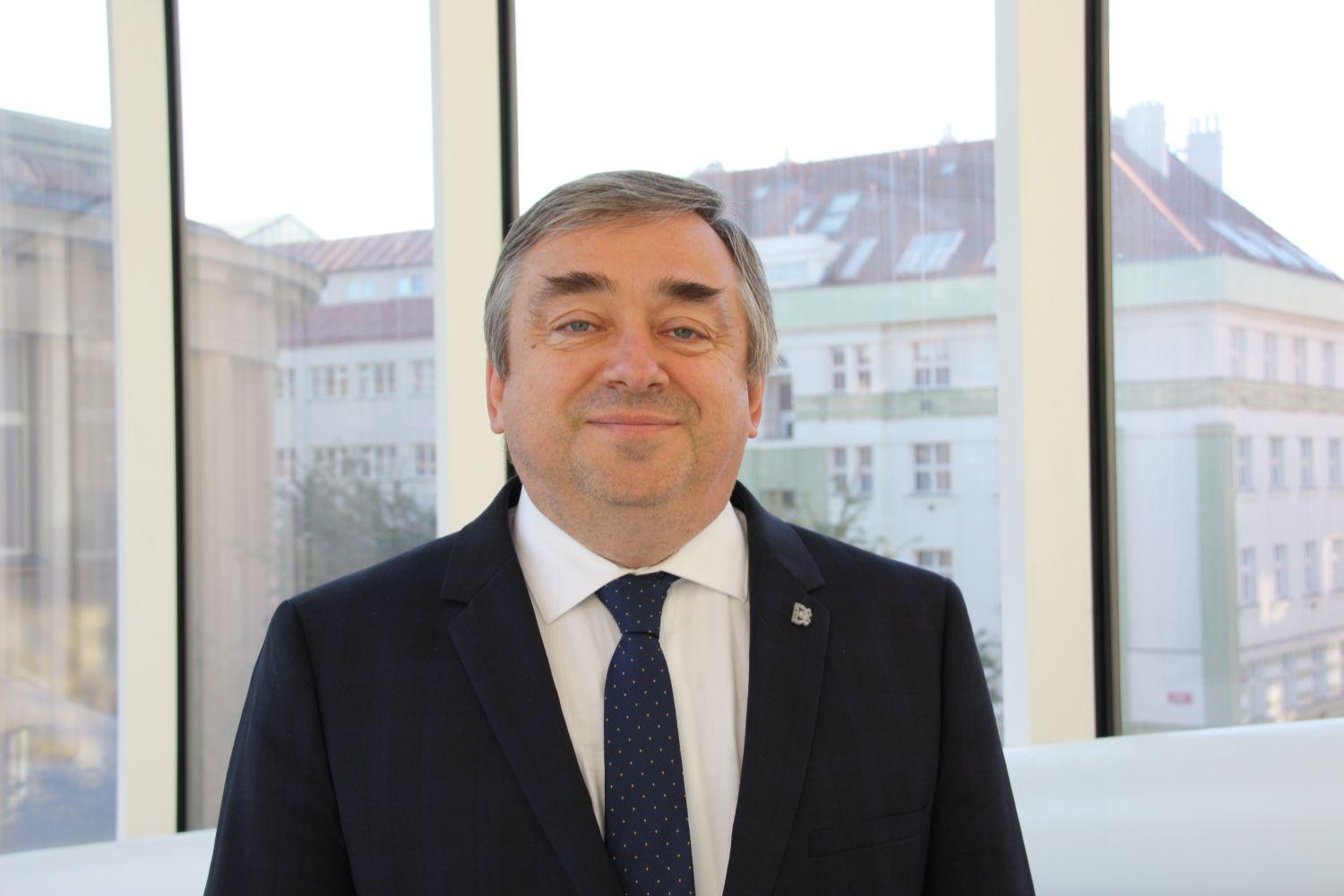
New project by professor Pavel Lhoták explores new methods for fullerene isolation for use in medicine and electronics
Fullerenes, spherical carbon molecules with exceptional properties, have a wide range of applications from medicine to electronics. However, their costly separation limits broader use. The project led by Professor Lhoták, supported by the Czech Science Foundation, focuses on developing new receptors based on larger calixarenes, which could enable efficient separation of fullerene mixtures. The results could pave the way for more advanced and cost-effective technologies for processing these unique materials.
Could you describe your project to a layperson in a few sentences? Why is it important?
Fullerenes, such as C₆₀ or C₇₀, are carbon compounds that have the shape of closed cage/spherical structures. They therefore belong to the same family as diamond, graphite, graphene, or carbon nanotubes (all of which are so-called allotropic forms of carbon). Due to their unique structures, they have a number of fascinating properties that directly predispose them to a wide scale of applications ranging from cosmetics (antioxidants, free radical scavenging) to materials science (batteries, advanced electronic devices, superconducting materials) to coating applications (significantly improved colour properties), to lubricants (thanks to their spherical structures) all the way to biomedical use (e.g. photodynamic therapy, contrast agents for X-ray and MRI imaging, drug delivery).
Wider use of fullerenes is limited because of a complex separation process, which, according to some estimates, represents up to 90% of total production costs. It would thus be very useful and highly desirable to develop new isolation and purification methods based on, for example, a supramolecular approach, i.e. using selective complexing agents capable of non-covalent interactions with fullerenes.
What inspired you to choose this topic? Was it a specific challenge you wanted to address, or a kind of natural continuation of your previous work?
For many years, we have been studying the chemistry of calix[n]arenes and thiacalix[n]arenes, which are macrocyclic compounds composed of phenolic building blocks linked by methylene or sulfur bridges. These compounds can be prepared with a selectable internal cavity size, can be easily derivatized, and their 3D structure can be manipulated to exhibit a cup-like shape. The unique concave molecular architecture and tunable internal cavity size make calixarenes very attractive building blocks for receptor design. The mutual shape compatibility of calixarenes and fullerenes (concave vs. convex) can lead to the formation of complexes held together by non-covalent interactions between the two systems.
What is the main goal of your research?
The aim of the work is the design and synthesis of new receptors based on larger calixarenes (composed of 6 to 8 phenolic units) that would be able to complex fullerenes inside the cavity. The effort will be in finding systems that show selectivity towards C₆₀ vs C₇₀ fullerenes (or even towards other commercially available fullerenes). Such systems could then be used for the separation of fullerene mixtures.
What do you think captured the selection committee’s attention the most?
I really don’t dare to guess. If I were to base my assessment on the available evaluations from international reviewers, they highlighted the fact that the project focuses on the area of lesser-known calixarenes (calix[6]arene to calix[8]arene), whose chemistry has not yet been extensively explored. They appreciated the effort in introducing new methods for synthesizing these macrocycles, and they were also interested in possible applications of the final receptors.
Will the project lead to any specific applications or technologies?
The project, funded by the Czech Science Foundation, is of course focused on basic research. Its initial aim is to understand the interaction of fullerene and calixarene systems and to use this knowledge in the design of new effective receptors for fullerene complexation. Applied research could, of course, be conducted later if promising calixarene systems are found.
What makes your project unique?
In preparing larger calixarenes, we would like to verify some new, previously untested approaches to their construction. These include, for example, repeated application of Michael Additions or targeted “demolition” of small macrocycles leading to building blocks suitable for the synthesis of larger macrocycles.
With whom are you collaborating on the project?
The project does not foresee any collaboration beyond UCT Prague. We should be able to do everything ourselves.
What obstacles or challenges do you anticipate during the project? Do you already have strategies for overcoming them?
One major obstacle appeared right away: no PhD student. I am currently trying to find a suitable candidate to help breathe life into the project.
What brings you the most joy in working on this project?
I suppose joy will come when we achieve interesting results. However, we still have a long way to go before that happens.
What, theoretically, should happen with your research after the project is completed?
As I mentioned, this is basic research. Of course, if suitable systems for selective complexation of fullerenes are found, some applied research could follow, e.g. in the form of a grant from the Technology Agency of the Czech Republic.







